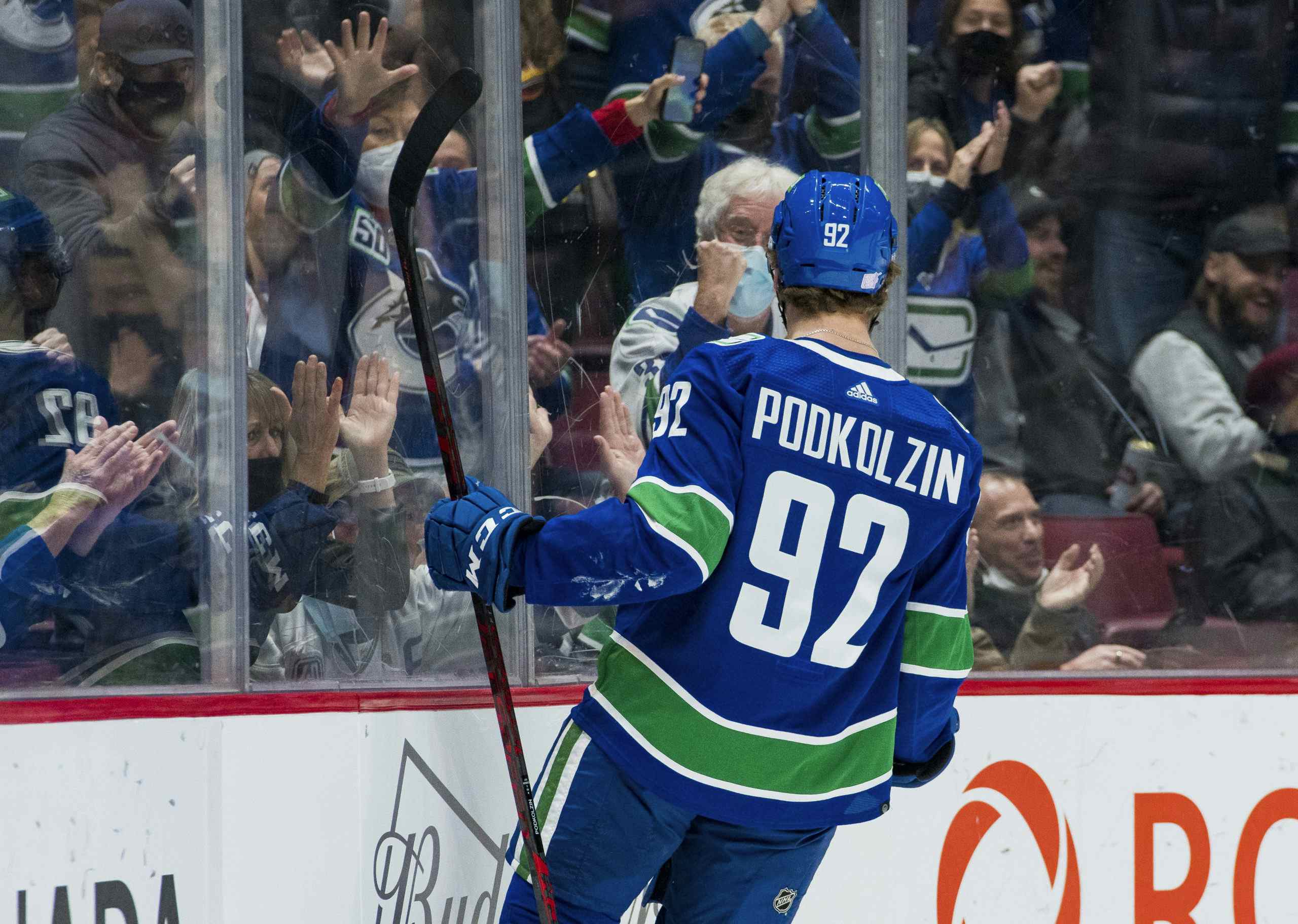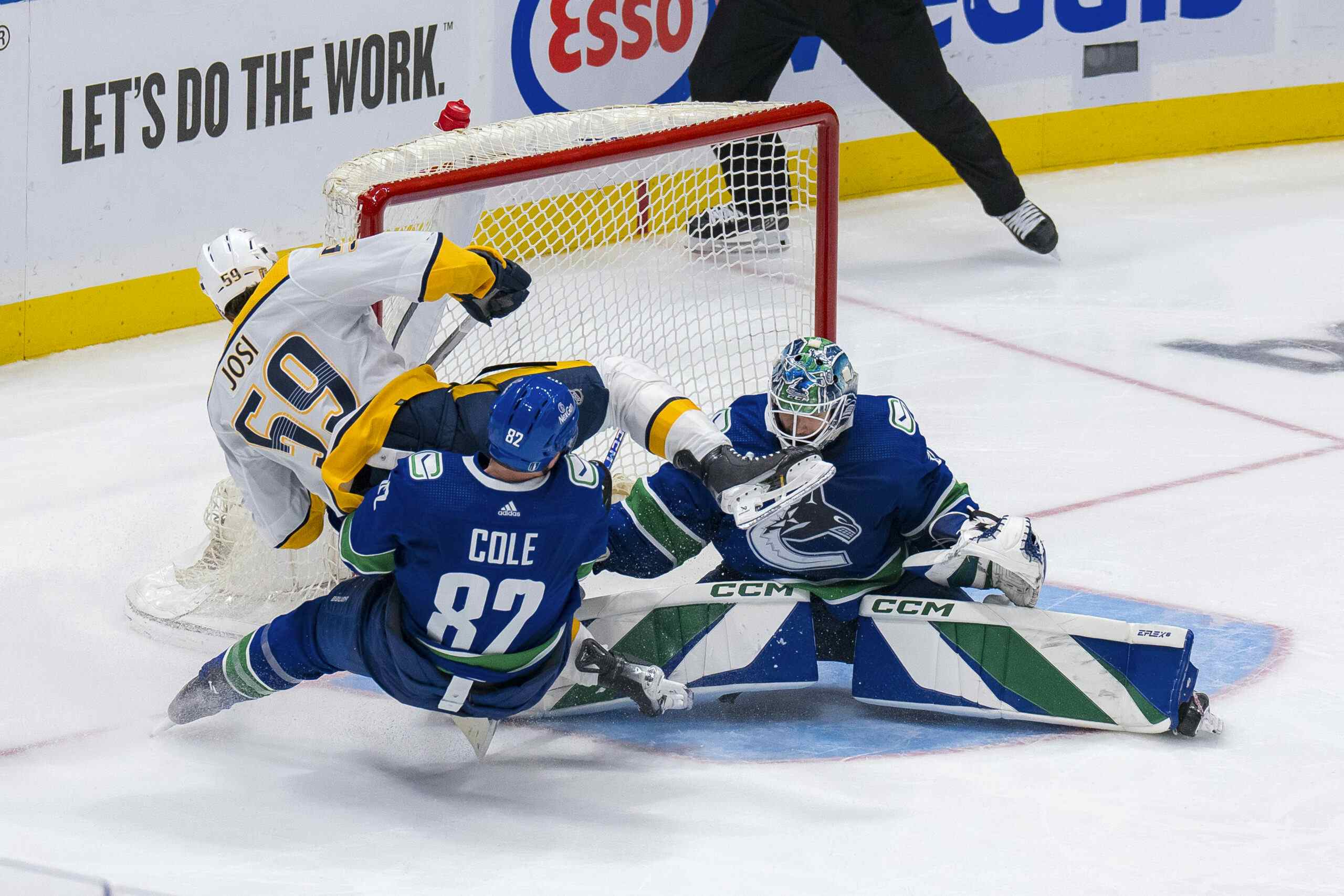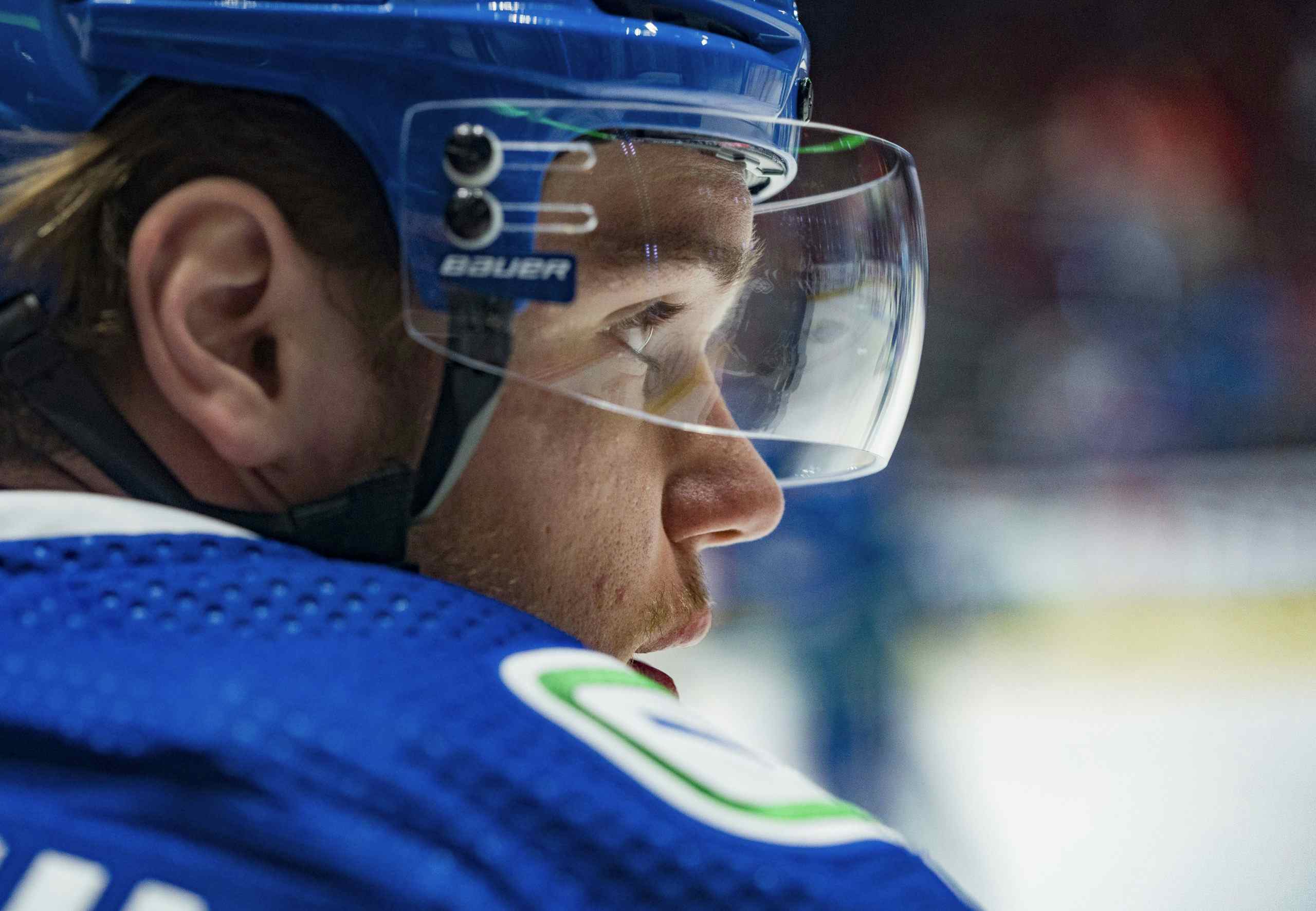The Top Six Puzzle: Where should Miller and Ferland play?
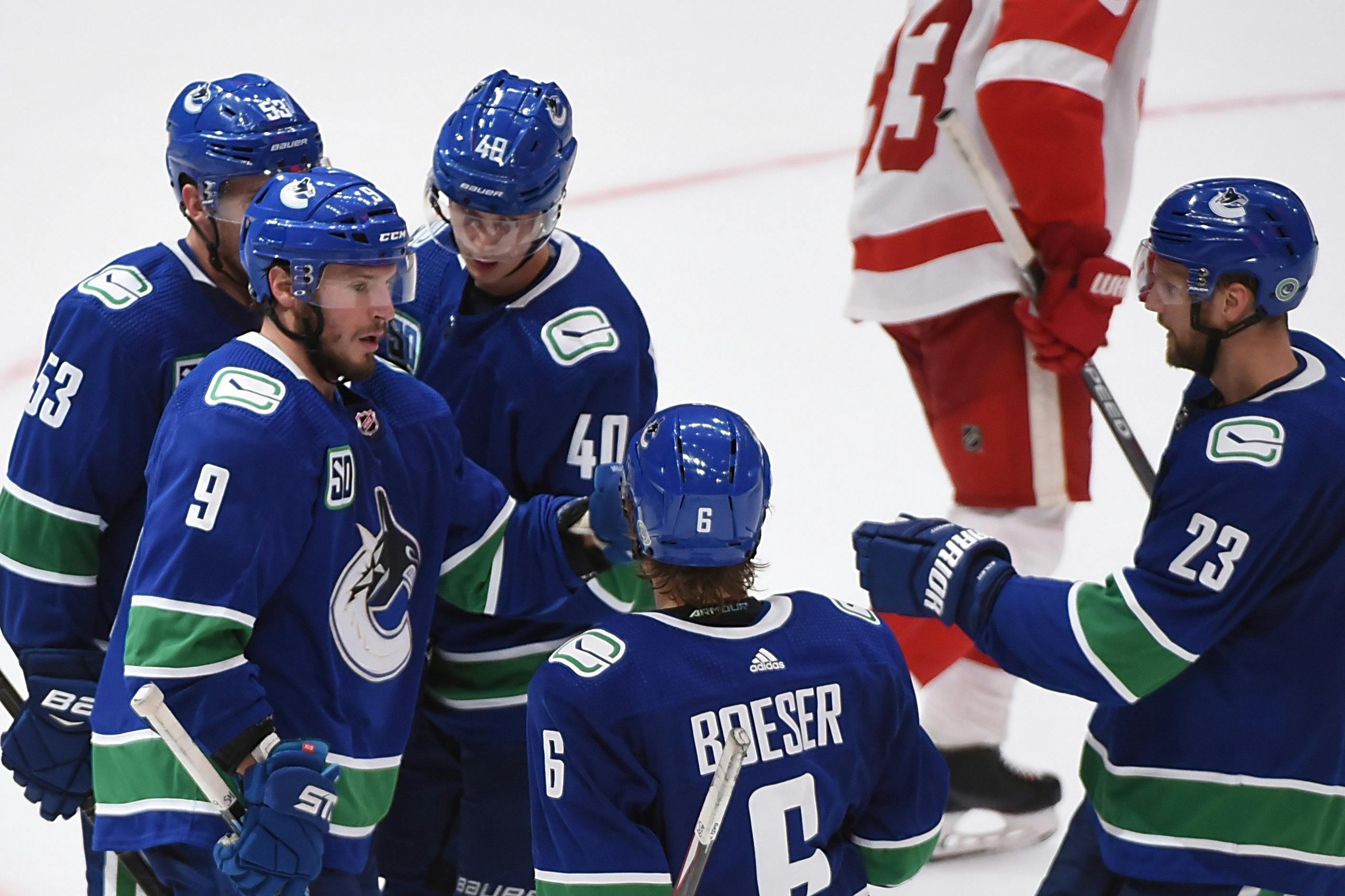
By Faber
4 years agoThe Canucks’ dynamic duo of @Elias Pettersson and @Brock Boeser struggled to produce offense early on with new linemate @Micheal Ferland, scoring just a single goal over their first few games together. This led Travis Green to make a switch, replacing Ferland on that line with J.T. Miller, who has proven to be a strong new addition so far. It appears to have been the right move, given that that line has now produced five goals since the change was made.
Obviously, the decision has paid off so far, but I think that even in the long term, it will be the right move to improve the top scoring line and make it as potent as possible. Let’s take a deeper look into why J.T. Miller works so well with the top scoring line, why Ferland hasn’t worked with Pettersson and Boeser and where he should slot in long-term.
The Fancy Stats That Got Me Thinking (HDA Scoring)
The Pettersson-Boeser duo scores a high percentage of their goals from outside the typical High Danger Area. These two players get a high percentage of their goals from odd man rushes into the offensive zone and shots from a distance. Pettersson and Boeser actually score a majority of their goals from outside the HDA, effectively expanding the area from which a line is likely to produce scoring chances from where it would usually be.
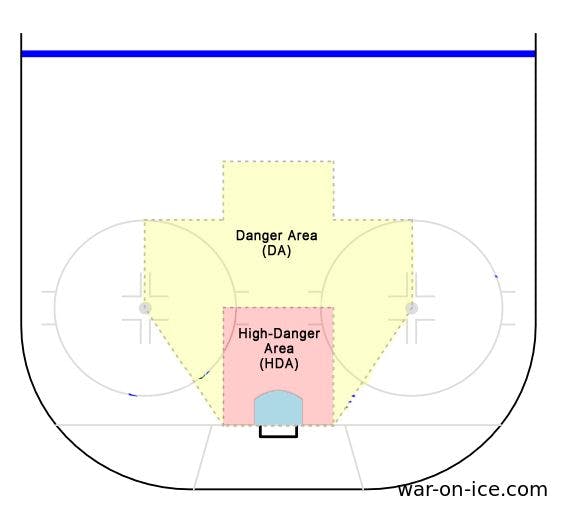
Courtesy of War-On-Ice.com
Take Pettersson as an example. Over his brief career, he has been on the ice for 86 goals scored and only 33 (38.4%) of those have come from the HDA. That percentage is low due to the fact that it includes the power play and Pettersson’s unit has traditionally scored a very high percentage of their goals from outside the HDA, often from one-timers.
Even when we look solely at 5-on-5 play, it is still apparent that Boeser and Pettersson score a lot of their goals from outside these high danger areas.

Here are Brock Boeser and Elias Pettersson’s goals at 5-on-5 from 2018-19 and 2019-20.
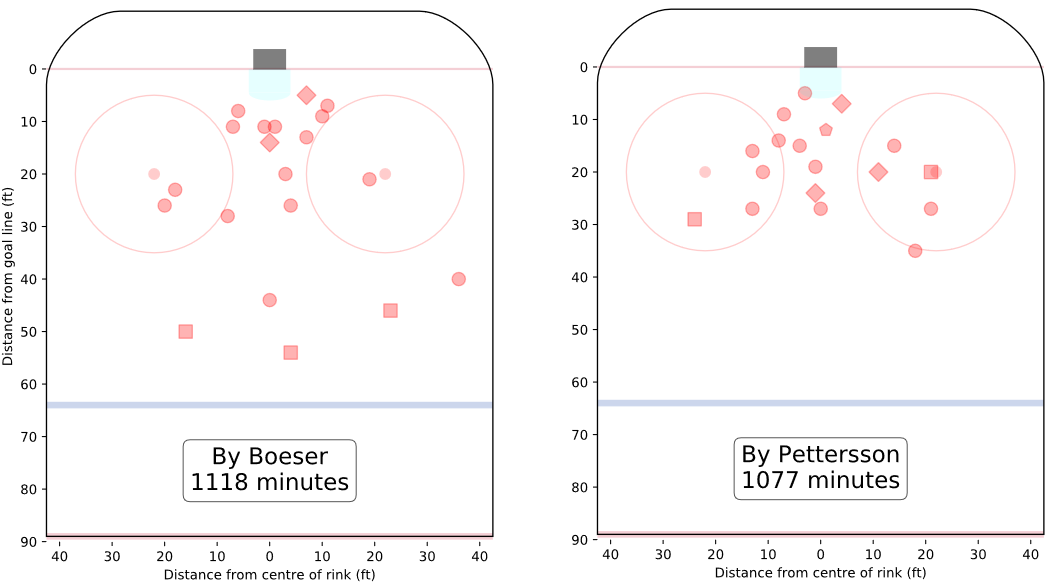

Spray charts courtesy of @IneffectiveMath, HockeyViz
We can infer a couple of things from these spray charts. The first is that Micheal Ferland could mesh nicely with Pettersson and Boeser, assuming he hangs around the net-front area to pot in garbage goals. Ferland definitely has the potential to bring a physical game that we haven’t seen with Pettersson and Boeser in their young careers as well, and having a good forechecker who can retrieve the puck for the two sharpshooters should theoretically help both players offensively.
Ferland has had success with skilled players in the past, frequently lining up alongside @Sean Monahan and @Johnny Gaudreau in Calgary, and spending a good portion of last season alongside @Sebastian Aho and @Teuvo Teravainen. In these games Ferland was able to increase the Goals For and Corsi For percentage of both of these situations.
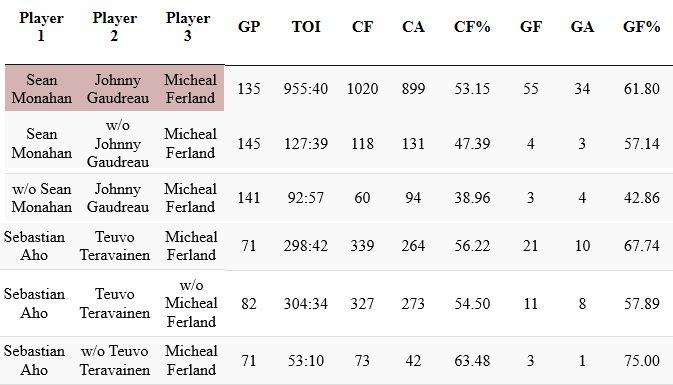
Line tool courtesy of NaturalStatTrick

Line tool courtesy of NaturalStatTrick
These former linemates generate a lot of their offence from the HDA, where Ferland thrives. He needs to play with a group that crashes the net with good hands in tight, something that Bo Horvat and Tanner Pearson have demonstrated in their time together.
Since Tanner Pearson joined the team, he and Bo Horvat have played over 200 minutes together at 5-on-5. While these two have been on the ice together, the Canucks have scored 80% of their goals from the HDA even with a low on ice shooting percentage of 9.01%. Adding Micheal Ferland to that group of net-driving players will give him the opportunity to slide back into a role in which he’s had success in the past.
During the offseason, one of the main focuses of roster improvement was to get Horvat some skilled wingers and though he has had success with J.T. Miller early on in the season, it makes sense to have the net crashers playing together. If Ferland can catch fire with that combo, it will give the Canucks two solid scoring lines and improve the team’s overall depth.
The Take
Ferland contributed by being a fixture near opposing goalies, scoring a very high percentage of his goals from the HDA, which seemed to work well when he was deployed alongside players like Aho, Gaudreau, Monahan and Teravainen. My worry is that he doesn’t bring a lot to the cycle game of Pettersson and Boeser. There was a lack of instant chemistry from that trio early on, which serves as a stark contrast to the recent boost in offence we’ve seen since Ferland was swapped out for J.T. Miller.
The early returns on that swap indicate that Miller has the hockey IQ, passing skill and the ability to control the pace of play to be a great fit alongside Pettersson and Boeser. Miller is also an effective player in high-danger spots, but based on the multiple spots on the ice he has shown he’s capable of scoring from, it’s clear he also opens up more areas for Pettersson and Boeser to make passes to and produce scoring chances.
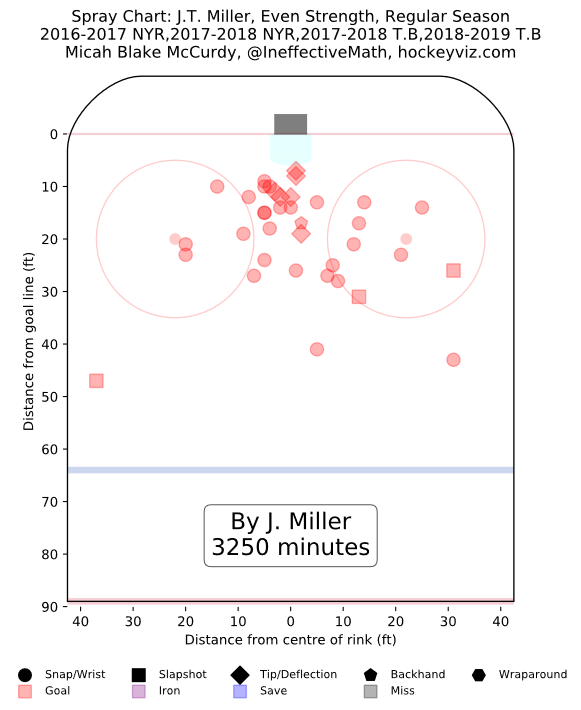
As I’ve laid out in previous articles, I’ve always believed the ideal linemate for Pettersson and Boeser is a playmaker who can take the puck into dirty areas and is good behind the net and along the boards. JT Miller fits this description perfectly. He gets a lot of his primary assists from the right side or behind the net. He is also able to progress play on the boards and is no stranger to setting up some of the league’s best goal-scorers.

He is also deadly when he is able to setup behind the net, where the Lightning used him on their powerplay last season.
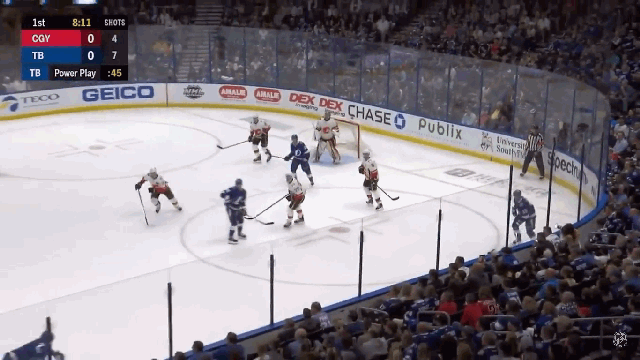
Closing Time
As top-six centres, Pettersson and Horvat both find success with very different players and primary attack points on the ice. The Canucks are fortunate to have such a diverse set of skills in their top six, sporting a centre who thrives in high danger areas and another who can be dangerous even from areas of the ice that aren’t traditionally dangerous for most players.
Ferland and Miller are both important pieces of the puzzle and if coach Travis Green embraces the different styles of his top two lines, it will bring the best out from both Pettersson and Horvat. Green just needs to find what works for this team and then watch the goals pile up once he finds the correct combination.
The health of a team’s offence obviously begins with their top-six, and the Canucks finally have the pieces to flesh out an effective one. They just need to have them in the right spot to see the offensive puzzle come together.
Recent articles from Faber

